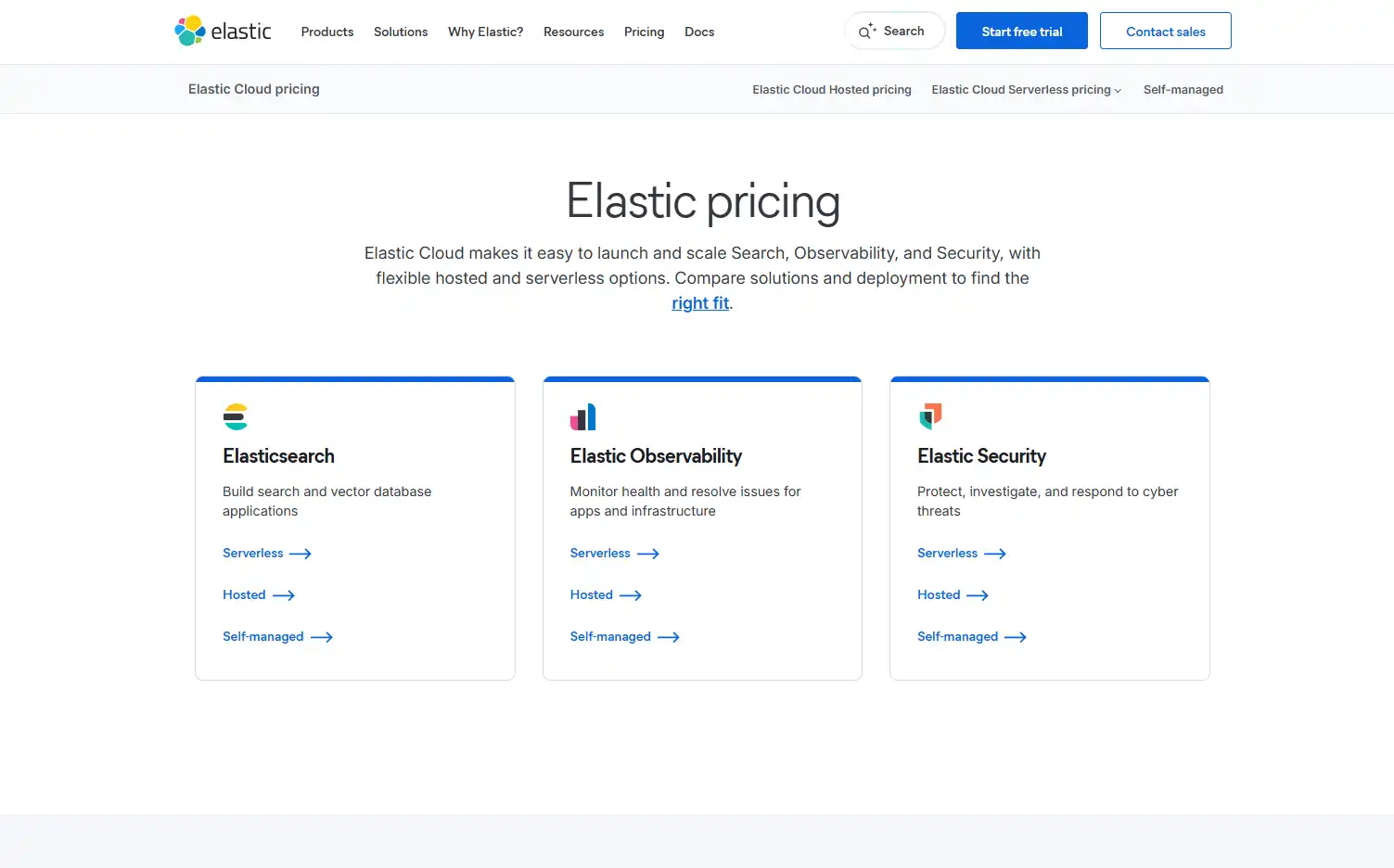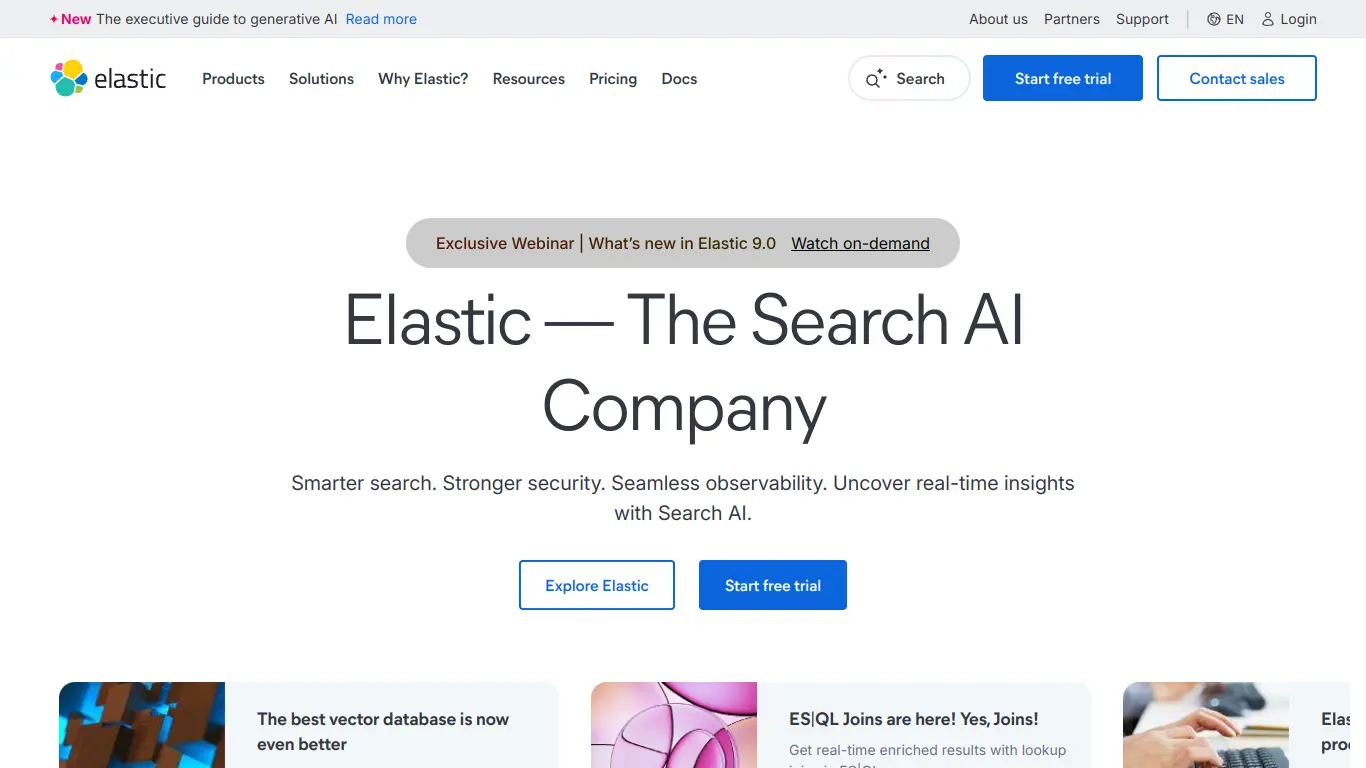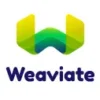Elasticsearch with kNN enhances traditional search with vector similarity, enabling powerful semantic search and recommendation features at scale.
Looking to supercharge your search applications with powerful similarity matching? If you’re drowning in massive datasets and need to find the nearest neighbors to your query points efficiently, you’ve probably encountered the limitations of traditional search methods. Elasticsearch with kNN (k-nearest neighbors) might be the solution you’ve been searching for.
Introduction to Elasticsearch with kNN
What is Elasticsearch with kNN and its Purpose?
Elasticsearch with kNN combines the robust search capabilities of Elasticsearch with k-nearest neighbor algorithms to enable powerful similarity search functionality. This integration allows users to find the most similar items to a query in high-dimensional vector spaces—something traditional text-based search can’t effectively accomplish.
At its core, Elasticsearch with kNN serves a crucial purpose: enabling vector search at scale. It allows you to represent complex data (text, images, audio, user behaviors) as mathematical vectors and find the most similar items based on vector distance calculations. This capability powers everything from recommendation engines to image similarity search and natural language understanding.
The kNN functionality was introduced to address the growing need for similarity searches in modern applications. While Elasticsearch has long excelled at text-based search, the addition of vector search capabilities opens up entirely new use cases and applications.
Who is Elasticsearch with kNN Designed For?
Elasticsearch with kNN caters to a diverse audience with varying technical needs:
- Data Scientists and ML Engineers: Professionals working with machine learning models who need to deploy vector embeddings and perform similarity searches in production environments.
- Software Developers: Engineers building search-powered applications that require both traditional text search and vector similarity.
- Data Engineers: Teams managing large-scale data pipelines who need efficient ways to index and search vector data.
- Enterprise Search Teams: Organizations looking to enhance their search capabilities with semantic understanding.
- AI Application Developers: Creators of AI-powered apps requiring semantic similarity matching.
The tool is particularly valuable for organizations dealing with large volumes of unstructured data that can benefit from vector representations—including text, images, audio, video, and user behavior data.
Getting Started with Elasticsearch with kNN: How to Use It
Getting started with Elasticsearch with kNN involves several key steps:
- Set up Elasticsearch: Install Elasticsearch or use Elastic Cloud, their managed service offering.
- Define your vector fields: In your index mapping, specify fields that will store vector data:
PUT my_index
{
"mappings": {
"properties": {
"my_vector": {
"type": "dense_vector",
"dims": 128,
"index": true,
"similarity": "cosine"
},
"text_field": {
"type": "text"
}
}
}
}
- Index your vector data: Convert your data into vector embeddings (using machine learning models like BERT, ResNet, etc.) and index them in Elasticsearch.
- Perform kNN searches: Query your index using the kNN search syntax:
GET my_index/_search
{
"knn": {
"field": "my_vector",
"query_vector": [0.3, 0.1, 0.2, ...],
"k": 10,
"num_candidates": 100
}
}
- Combine with traditional search: One of the most powerful aspects is the ability to combine vector search with traditional Elasticsearch queries:
GET my_index/_search
{
"query": {
"bool": {
"must": [
{
"match": {
"text_field": "search term"
}
}
],
"filter": {
"knn": {
"my_vector": {
"vector": [0.3, 0.1, 0.2, ...],
"k": 10
}
}
}
}
}
}
For beginners, Elastic provides comprehensive documentation and tutorials to help you get started with vector search functionality.
Elasticsearch with kNN’s Key Features and Benefits
Core Functionalities of Elasticsearch with kNN
Elasticsearch with kNN offers several powerful core functionalities:
- Approximate k-nearest neighbor search: The system uses approximation algorithms to efficiently find similar vectors without exhaustively comparing against every vector in the database.
- Multiple similarity metrics: Supports various distance metrics including:
- Cosine similarity (measuring angle between vectors)
- Euclidean distance (measuring straight-line distance)
- Dot product (for normalized vectors)
- Hybrid search capabilities: Uniquely combines vector search with traditional text-based search, filters, and aggregations.
- Tunable accuracy-performance tradeoff: Allows users to adjust the
num_candidatesparameter to balance search accuracy against performance requirements. - Vector quantization support: Offers HNSW (Hierarchical Navigable Small World) and IVF (Inverted File) algorithms for efficient approximate search.
- Script scoring with vectors: Enables custom scoring functions incorporating vector similarity.
- Seamless integration with Elasticsearch ecosystem: All vector search capabilities work with Elasticsearch’s distributed architecture, security features, and monitoring tools.
Advantages of Using Elasticsearch with kNN
The key advantages that make Elasticsearch with kNN stand out include:
- Scalability: Handles billions of vectors across distributed clusters, allowing systems to grow as data increases.
- Performance: Approximate search algorithms enable sub-second query times even with massive vector datasets.
- Versatility: Works with vectors of various dimensions and from different domains (text, image, audio, etc.).
- Operational maturity: Benefits from Elasticsearch’s proven reliability, monitoring, and security features.
- Hybrid search capability: Uniquely combines semantic vector search with keyword search for more comprehensive results.
- Real-time indexing: New vectors are immediately available for search, unlike some specialized vector databases that require rebuild cycles.
- Managed cloud option: Available as a fully-managed service via Elastic Cloud, reducing operational overhead.
- Integration ecosystem: Easily connects with data pipelines, visualization tools, and application frameworks.
Main Use Cases and Applications
Elasticsearch with kNN enables a wide range of applications across industries:
| Industry | Use Case | Implementation |
|---|---|---|
| E-commerce | Product recommendations | Vector embedding of product features and user preferences |
| Media | Content discovery | Semantic search across articles or media content |
| Healthcare | Medical image similarity | Finding similar medical images based on visual features |
| Finance | Fraud detection | Identifying unusual transaction patterns via vector similarity |
| Technology | Code search | Semantic code search based on functionality |
| Customer Service | Smart FAQ systems | Finding semantically similar questions |
| Manufacturing | Defect detection | Finding similar patterns in quality control images |
| Security | Threat intelligence | Identifying similar security threats or attack patterns |
A particularly compelling application is semantic search, where documents are embedded into vectors capturing their meaning, allowing users to find relevant content even when keywords don’t match exactly.
Exploring Elasticsearch with kNN’s Platform and Interface
User Interface and User Experience
Elasticsearch with kNN doesn’t provide its own dedicated UI for vector search operations. Instead, it integrates seamlessly with existing Elasticsearch interfaces:
- REST API: The primary interface for developers is the comprehensive REST API, allowing fine-grained control over vector operations through JSON requests.
- Kibana: Elasticsearch’s visualization platform provides a Dev Tools console for testing kNN queries and visualizing results. Advanced users can build custom dashboards to visualize vector spaces.
- Client Libraries: Official libraries in Java, Python, Node.js, .NET, PHP, Ruby, and Go make it easier to interact with vector search functionality from application code.
The user experience is designed primarily for developers and data engineers rather than end-users. The API-first approach prioritizes flexibility and integration capabilities over a simplified GUI experience. This design choice allows for easy incorporation into custom applications where vector search is just one component of a larger system.
Platform Accessibility
Elasticsearch with kNN can be accessed through multiple deployment options to suit different organizational needs:
- Self-hosted deployment: Install and manage Elasticsearch on your own infrastructure (on-premises or cloud VMs).
- Elastic Cloud: A fully-managed service offering that handles infrastructure management, scaling, and updates.
- Cloud marketplace offerings: Quick-start deployments available on AWS, Google Cloud, and Microsoft Azure.
Accessibility considerations include:
- Resource requirements: kNN operations can be memory and CPU intensive, requiring properly sized clusters.
- Learning curve: While the REST API is well-documented, effective vector search requires understanding of both Elasticsearch concepts and vector embedding techniques.
- Developer-focused: Requires programming knowledge to implement effectively in applications.
- Enterprise support: Available through Elastic’s subscription tiers for organizations requiring SLAs and priority support.
Platform limitations to be aware of:
- Vector dimensions are fixed per field and can’t be changed without reindexing
- Very high-dimensional vectors (thousands of dimensions) may face performance challenges
- Approximate search algorithms prioritize speed over 100% accuracy
Elasticsearch with kNN Pricing and Plans

Subscription Options
Elasticsearch, including its kNN functionality, is available through several pricing models:
- Elastic Cloud (managed service):
- Elasticsearch Service: Fully-managed Elasticsearch clusters with various tiers based on deployment size and capabilities.
- Enterprise Search: Managed service focused on search applications.
- Observability: Focused on logging, metrics, and APM features.
- Self-managed options:
- Elastic Stack: The open-source components (with some features under Elastic License).
- Elastic Enterprise: Commercial offering with advanced features and support.
Pricing factors include:
- Node count and size
- Memory allocation
- Storage requirements
- SLA requirements
- Support level needed
For the most accurate and current pricing information, potential users should visit Elastic’s pricing page or contact their sales team for custom quotes based on specific requirements and scale.
Free vs. Paid Features
Elasticsearch operates under a dual licensing model that affects which kNN features are available for free:
Free Tier (Elastic License / Open Source):
- Basic vector field types
- Simple kNN query capabilities
- Limited scaling options
- Community support
Paid Tiers:
- Advanced approximate kNN algorithms (HNSW)
- Vector quantization for memory efficiency
- Filtered kNN queries
- Technical support with SLAs
- Security features (field-level security, audit logging)
- Machine learning integrations
- Readiness for enterprise deployment
It’s worth noting that while the basic vector search functionality is available in the free tier, organizations with production workloads typically opt for paid subscriptions to access performance optimizations, support, and enterprise features.
Elasticsearch with kNN Reviews and User Feedback
Pros and Cons of Elasticsearch with kNN
Based on user feedback and expert analysis, here are the main pros and cons of Elasticsearch with kNN:
Pros:
- ✅ Seamless integration of vector search with traditional search capabilities
- ✅ Excellent performance for most common vector search use cases
- ✅ Mature ecosystem with robust monitoring, security, and scaling tools
- ✅ Regular updates and improvements to vector search algorithms
- ✅ Strong documentation and community resources
- ✅ Ability to run complex hybrid queries combining vectors, text, and structured data
- ✅ Familiar API for organizations already using Elasticsearch
Cons:
- ❌ Higher resource requirements compared to specialized vector databases
- ❌ Configuration complexity for optimal performance tuning
- ❌ Limited vector dimensions compared to some specialized alternatives
- ❌ Learning curve for those new to Elasticsearch ecosystem
- ❌ Approximate search algorithms sacrifice some accuracy for speed
- ❌ Advanced features require paid subscription
- ❌ Can be expensive at scale compared to open-source alternatives
User Testimonials and Opinions
Industry professionals and organizations have shared various perspectives on using Elasticsearch with kNN:
“We implemented Elasticsearch’s vector search to power our content recommendation engine. The ability to combine traditional keyword matching with semantic similarity has increased user engagement by 32%.” – Data Engineering Lead at a Media Company
“After migrating from a specialized vector database to Elasticsearch with kNN, we simplified our infrastructure by consolidating search systems. Performance is comparable for our use case, and operational overhead has decreased significantly.” – CTO at an E-commerce Startup
“The learning curve was steeper than expected, but once properly configured, our image similarity search performs exceptionally well. Being able to filter vector searches based on metadata is a game-changer for our application.” – ML Engineer at a Computer Vision Company
“Resource consumption is our biggest challenge with Elasticsearch vector search at scale. We’ve had to carefully optimize our cluster configuration and vector dimensions to maintain performance.” – DevOps Manager at an Enterprise Software Company
Common themes from user feedback include satisfaction with the hybrid search capabilities, appreciation for the unified platform approach, and some concerns about resource optimization at scale.
Elasticsearch with kNN Company and Background Information
About the Company Behind Elasticsearch with kNN
Elasticsearch with kNN is developed by Elastic N.V., a company founded in 2012 by Shay Banon, the creator of Elasticsearch. The company has grown significantly since its inception:
- Public company: Elastic went public in 2018 (NYSE: ESTC)
- Global presence: Headquartered in Mountain View, California, with offices worldwide
- Employee count: Over 2,800 employees globally
- Company mission: Making data usable in real time and at scale for search, logging, security, and analytics use cases
Elastic is known for developing and maintaining the Elastic Stack (formerly ELK Stack), which includes:
- Elasticsearch: Distributed search and analytics engine
- Kibana: Data visualization and management
- Logstash: Data processing pipeline
- Beats: Lightweight data shippers
The company has a strong commitment to the developer community, with significant contributions to open source while also developing commercial features. The vector search capabilities in Elasticsearch represent a strategic investment area for the company as AI and machine learning applications become increasingly central to modern applications.
Recent company developments include:
- Expansion into security analytics market
- Growing focus on machine learning capabilities
- Continued evolution of cloud services offerings
- Strategic acquisitions to enhance core product capabilities
The kNN functionality was introduced as part of Elastic’s response to the growing importance of vector search in modern applications, particularly those leveraging machine learning and AI.
Elasticsearch with kNN Alternatives and Competitors
Top Elasticsearch with kNN Alternatives in the Market
Several alternatives to Elasticsearch with kNN exist in the vector search space:
- Milvus (https://milvus.io/)
- Open-source vector database focused exclusively on similarity search
- Strong performance for high-dimensional vectors
- Active community and commercial support options
- Pinecone (https://www.pinecone.io/)
- Managed vector database service
- Optimized for machine learning embeddings
- Simple API with strong performance
- Weaviate (https://weaviate.io/)
- Open-source vector search engine
- GraphQL API and modular architecture
- Strong focus on AI-native applications
- Qdrant (https://qdrant.tech/)
- Vector similarity search engine
- Optimized for production-ready vector search
- Flexible filtering capabilities
- pgvector (https://github.com/pgvector/pgvector)
- PostgreSQL extension for vector similarity search
- Integrates vector search into traditional database
- Good for organizations already using PostgreSQL
- Vespa (https://vespa.ai/)
- Open-source search engine with vector capabilities
- Designed for low-latency, high-throughput applications
- Combines search, recommendation, and personalization
Elasticsearch with kNN vs. Competitors: A Comparative Analysis
When comparing Elasticsearch with kNN against competitors, several factors emerge:
| Feature | Elasticsearch with kNN | Specialized Vector DBs (Milvus/Pinecone) | Traditional DB Extensions (pgvector) |
|---|---|---|---|
| Primary focus | General search + vector search | Pure vector search | Database + vector extension |
| Performance for vector-only | Good | Excellent | Moderate |
| Hybrid search | Excellent | Limited | Moderate |
| Ecosystem maturity | Very High | Moderate | Depends on DB |
| Scalability | Very good | Very good | Moderate |
| Deployment options | Self-hosted or managed | Varies (mostly managed) | Self-hosted |
| Learning curve | Steep | Moderate | Depends on DB familiarity |
| Resource requirements | High | Moderate | Moderate |
| Community size | Very large | Growing | Varies by DB |
Key differentiators for Elasticsearch with kNN:
- Unified platform: Unlike specialized vector databases, Elasticsearch offers a single platform for text search, analytics, and vector search.
- Mature ecosystem: Benefits from years of development in distributed systems, security, and monitoring.
- Hybrid search capabilities: Excels at combining traditional search with vector similarity in ways specialized databases cannot.
- Enterprise readiness: Built-in security, monitoring, and scaling features appeal to large organizations.
When to choose Elasticsearch with kNN over alternatives:
- When you need both traditional and vector search capabilities
- When you already use Elasticsearch for other purposes
- When hybrid search combining text and vectors is important
- When enterprise features and support are priorities
When to choose alternatives:
- When your use case is exclusively vector search
- When you need to work with very high dimensional vectors
- When memory efficiency is the top priority
- When you prefer a more specialized, focused solution
Elasticsearch with kNN Website Traffic and Analytics
Website Visit Over Time
Elastic.co, the company website hosting Elasticsearch with kNN, receives substantial traffic as one of the leading search technology providers:
- Monthly visitors: Approximately 3-5 million monthly visitors according to third-party analytics
- Traffic trend: Growing steadily, with occasional spikes around major product releases and conferences
- Engagement metrics: Average session duration of approximately 3-4 minutes with multiple pages per session
Note: These figures represent estimates from public web analytics data and may not reflect the company’s internal metrics.
Geographical Distribution of Users
Elasticsearch with kNN has a global user base, with notable concentrations in:
- North America (35-40% of traffic)
- United States is the dominant market
- Strong presence in technology hubs like San Francisco, Seattle, and New York
- Europe (30-35%)
- Strong adoption in UK, Germany, France, and Netherlands
- Growing presence in Eastern European tech hubs
- Asia Pacific (20-25%)
- Significant user bases in India, Japan, Australia, and Singapore
- Growing rapidly in China and Southeast Asia
- Rest of world (5-10%)
- Emerging presence in Brazil, Israel, and parts of Africa
This global distribution reflects Elasticsearch’s widespread adoption across industries and regions.
Main Traffic Sources
Traffic to Elasticsearch resources comes from diverse channels:
- Organic search (45-50%): Strong SEO performance for technical search terms
- Direct traffic (20-25%): Indicating strong brand recognition
- Referral traffic (15-20%): From technology blogs, Stack Overflow, GitHub, and partner websites
- Social media (5-8%): Primarily from LinkedIn, Twitter, and technical communities
- Paid campaigns (5-7%): Targeted advertising for specific features and solutions
The high proportion of organic and direct traffic suggests strong brand recognition and community trust in the Elasticsearch ecosystem.
Frequently Asked Questions about Elasticsearch with kNN (FAQs)
General Questions about Elasticsearch with kNN
Q: What is the difference between exact and approximate kNN in Elasticsearch?
A: Exact kNN calculates distances between the query vector and all indexed vectors, guaranteeing the k nearest results but with high computational cost. Approximate kNN (using algorithms like HNSW) trades perfect accuracy for dramatically improved performance by examining only a subset of vectors, making it practical for large datasets.
Q: Can Elasticsearch with kNN handle real-time vector search?
A: Yes, Elasticsearch’s near real-time search capabilities extend to vector fields. New vectors become searchable within one second of indexing by default, making it suitable for applications requiring fresh results.
Q: What vector dimensions are supported?
A: Elasticsearch supports vectors with up to 1,024 dimensions, though performance considerations may suggest using lower dimensions (128-512) for optimal balance between expressiveness and efficiency.
Feature Specific Questions
Q: How do I choose between cosine similarity, dot product, and Euclidean distance?
A: Choose based on your vector properties: cosine similarity works well for comparing direction regardless of magnitude (good for text), Euclidean for absolute distances in space (good for coordinates), and dot product for when both direction and magnitude matter (often used with normalized vectors).
Q: Can I combine vector search with traditional text search?
A: Yes, this is one of Elasticsearch’s key strengths. You can create bool queries that combine kNN for semantic similarity with text matching, filters on metadata, and other query types for comprehensive search experiences.
Q: How can I improve vector search performance?
A: Performance can be improved by:
- Adjusting the num_candidates parameter (higher values increase accuracy but reduce speed)
- Using appropriate index settings for your hardware
- Sizing your cluster appropriately
- Considering dimensionality reduction techniques
- Using vector quantization when available
Pricing and Subscription FAQs
Q: Is vector search available in the free version of Elasticsearch?
A: Basic vector search functionality is available in the open source and free versions, but advanced features like the HNSW algorithm require a paid subscription.
Q: How is pricing determined for vector search workloads?
A: Pricing is typically based on computational resources (node count, RAM, CPU) rather than vector count or search volume specifically. For Elastic Cloud, pricing is based on deployment size and capabilities enabled.
Support and Help FAQs
Q: Where can I find help with vector search implementation?
A: Resources include:
- Official Elasticsearch documentation
- Elastic’s community forums
- Stack Overflow
- Elastic support (for paid subscriptions)
- Elastic’s GitHub repositories
- Community Slack channels
Q: Does Elastic offer professional services for implementing vector search?
A: Yes, Elastic offers consulting services to help with implementation, optimization, and training for vector search applications, available to customers on appropriate subscription tiers.
Conclusion: Is Elasticsearch with kNN Worth It?
Summary of Elasticsearch with kNN’s Strengths and Weaknesses
After a comprehensive analysis, here’s a summary of Elasticsearch with kNN’s main strengths and weaknesses:
Key Strengths:
- 🔹 Unified platform combining traditional search, analytics, and vector search
- 🔹 Excellent hybrid search capabilities for combining semantic and keyword search
- 🔹 Enterprise-grade security, monitoring, and scaling features
- 🔹 Mature ecosystem with extensive documentation and community support
- 🔹 Flexible deployment options (self-hosted or managed service)
- 🔹 Regular updates and improvements to vector algorithms
- 🔹 Strong integration capabilities with data pipelines and applications
Key Weaknesses:
- 🔸 Higher resource requirements compared to specialized vector databases
- 🔸 Complexity of configuration and tuning for optimal performance
- 🔸 Learning curve for organizations new to the Elasticsearch ecosystem
- 🔸 Higher costs at scale compared to some alternatives
- 🔸 Advanced features require paid subscription tiers
- 🔸 Not optimized exclusively for vector search use cases
Final Recommendation and Verdict
Elasticsearch with kNN represents a compelling solution for vector search needs, but its ideal use case depends on several factors.
Elasticsearch with kNN is ideal for:
- Organizations already using Elasticsearch who want to add vector search capabilities without introducing a new database system.
- Applications requiring hybrid search that combine traditional text search, structured data filtering, and vector similarity in a unified query.
- Enterprise environments where security, monitoring, and reliability features justify the additional resource requirements.
- Teams seeking a mature platform with extensive documentation, community support, and commercial backing.
Consider alternatives when:
- Your use case is exclusively vector search with no need for text search or analytics.
- You’re starting from scratch with no existing Elasticsearch investment.
- Extreme optimization for vector search performance is your top priority.
- You’re operating under tight resource constraints.
The final verdict: Elasticsearch with kNN provides exceptional value for organizations seeking to enhance existing search applications with semantic capabilities or build new applications requiring both traditional and vector search. Its unified approach eliminates the complexity of maintaining separate systems for different search types, even if it comes with higher resource requirements.
Rather than being the absolute best at pure vector search, Elasticsearch with kNN excels at being a comprehensive search platform that handles vector search very well—making it the right choice for many real-world applications where search needs are rarely one-dimensional.
For organizations ready to embrace the future of search—where meaning matters as much as keywords—Elasticsearch with kNN offers a production-ready path forward without abandoning the benefits of traditional search techniques.



















